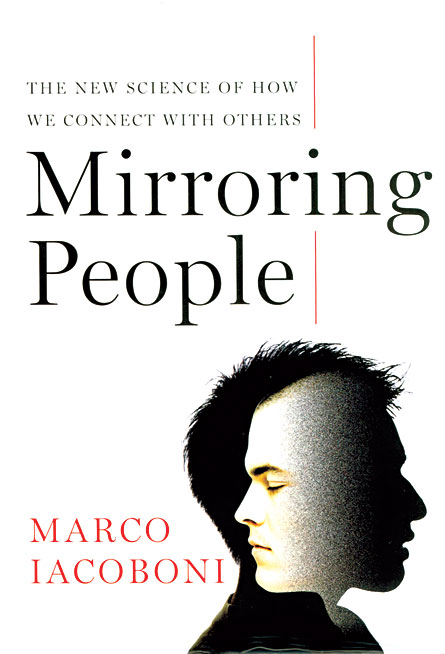BOOK REVIEW | Mirroring People: The New Science of How We Connect With Others
Review by Amy Maxmen
People cry when they watch sad movies or wince when they see athletes fall. This sense of shared experience is thought to be at the core of human society. How empathy physically happens, however, wasn’t known until neuroscientists in Italy stumbled upon a possible explanation 15 years ago.

Iacoboni, one of those pioneers at the University of Parma, describes how he and his colleagues initially sought to find which neurons fired when a monkey moved its hands. They attached tiny electrodes to individual cells in the monkeys’ brains, and the monitor buzzed when the monkeys snatched a peanut. Yet once when a lab assistant was preparing for the experiment and moving around peanuts, the neurons in the wired-up monkey began to fire — the same neurons that fired when the monkey itself picked up the peanuts.
More experiments confirmed that a set of neurons fired both when monkeys performed an action and when they saw the action performed. The team named the cells mirror neurons, and studies have since extended to humans.
Iacoboni, now at UCLA, explains ongoing research on how the neurons might account for group behavior and how dysfunctional mirror neurons might lead to disorders such as autism.
The history of mirror neuron research is short enough to be clearly described for the nonspecialist reader, and its future exciting enough to attract anyone interested in human interaction. A book by a top researcher will be a boon to anyone wishing to separate what is actually known about mirror neurons from the hype.Farrar, Straus and Giroux, 2008, 307 p., $25